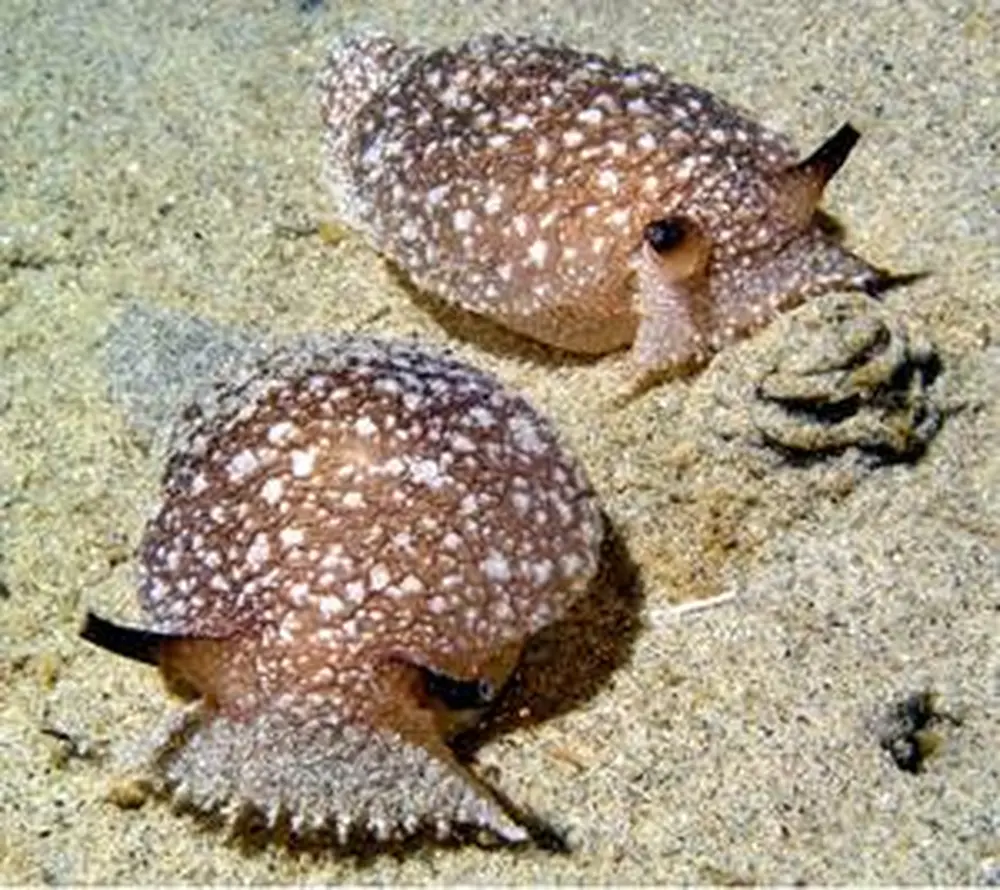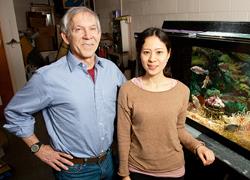

What in the world does the decision-making process of a blind, cannibalistic sea slug have to do with the kind of decisions made by an out-of-control gambler burning through cash in Las Vegas, a shopaholic off on a spending spree, or an addict snorting cocaine?
Sea slugs are shedding light on what’s going on in the brain when higher vertebrates, such as humans, make high-risk decisions while seeking rewards in extreme situations—the kinds of decisions being made by people addicted to gambling or drugs.
University of Illinois researchers have been examining what’s happening in the brains of cannibalistic sea slugs whenever they encounter another life form and have to make a life or death decision. Do I attack? Do I flee? Or do I do nothing? How does a sea slug, a predatory forager, make such a crucial decision?
“After some work, it became clear that they do it pretty much like you and me,” says Rhanor Gillette, an LAS molecular and integrative physiology professor who conducted the study with graduate student Keiko Hirayama. “They make decisions not so much on the basis of information, per se, but on the basis of how information makes them feel.”
Illinois researchers found that much of the decision boils down to how hungry the sea slugs feel. When the neurons that control the animal’s attack and feeding behavior switch into a heightened state of excitation, that means the slug is hungry and will go for nearly anything that smells like food. However, the animal still combines this feeling with information such as: Does the other creature smell good? Is it bigger than me? What happened the last time I encountered something like this?

Even though sea slugs have a primitive nervous system, they can quickly figure out what not to eat, Gillette says. Researchers saw this happening when one species of sea slug (Pleurobranchaea) encountered another species (Flabellina iodinea), which contains a noxious chemical in its tissues. A video shows the Pleurobranchaea sea slug biting into the noxious species during its first encounter, but then it wisely steers away from the other creature during its second encounter.
Only an “insanely hungry” animal will attack an animal that gives it a bite of foul-tasting flesh or jolts them with an electric shock in the process, Gillette says.
Gillette and Hirayama think they have identified a simple and general type of neural circuit in the sea slug, which could be at the core of the more complicated decisions made by humans. That’s why these findings may help researchers in studying various kinds of addictions and other extreme, reward-seeking behaviors. Gillette says more research on the decision circuitry could also lead to the development of better digital personal assistants (such as Siri on the iPhone) and Internet avatars (software representations of people).
This neural circuit is involved in fundamental decisions about risk and whether to acquire or avoid a particular resource. Humans face the same kinds of decisions and will sometimes take extreme risks when they are driven by a strong reward—such as the charge people get from drugs or gambling.
“This basic type of decision is subverted in humans through substance abuse, in illogical gambling, and in badly managed shopping, for example,” Gillette says. “So studying the basis of this type of decision in a very simple animal helps us to work it out.”


